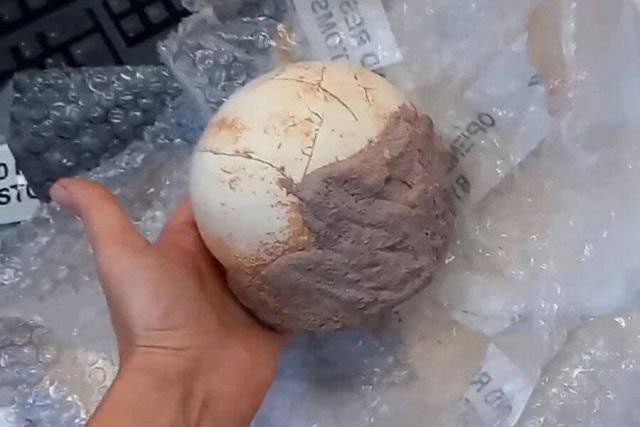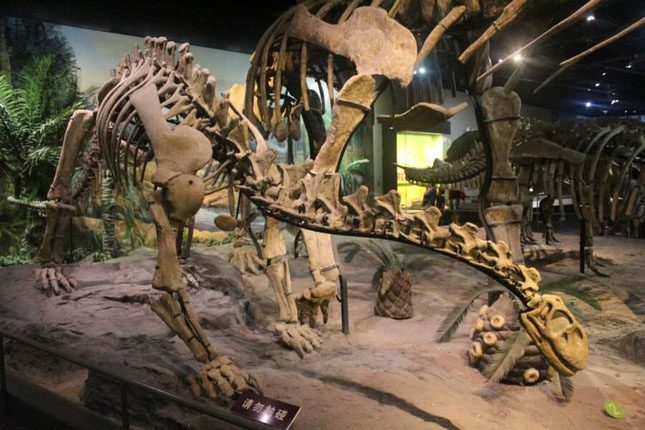A 159-million-year-old dinosaur egg with a diameter of 12.7 cm, encased in sedimentary rock on one half of its shell. Italian Customs officials made the surprising discovery while inspecting an international e-commerce package.
According to Allthatsinteresting, the Bergamo Customs and Monopoly Agency (Italy) recently announced an astonishing find on Facebook. On June 13, officials at the international airport in this city discovered a prehistoric dinosaur egg, estimated to be 159 million years old, being illegally transported into the country from Malaysia.
The Director of Archaeology, Fine Arts, and Landscape of Italy later identified the dinosaur egg as belonging to the Shunosaurus species. This species roamed the Earth 159 million years ago during the late Jurassic or early Cretaceous period.

The prehistoric dinosaur egg recently seized by Italian Customs.

Close-up of the fossilized dinosaur egg.
“During the inspection of e-commerce goods to combat illegal imports, we discovered a fossilized dinosaur egg encased in sedimentary rock within a package… This package had suspicious origin documentation, with the issuing organization identified as non-existent,” stated the Italian Customs and Monopoly Agency.
Customs officials noted that the egg was wrapped in bubble wrap placed inside a standard brown cardboard shipping box and had been classified in the international e-commerce customs area.
The discovery of a prehistoric dinosaur egg is even more remarkable as it resulted from a routine customs inspection.
The package was sent from Malaysia to Bergamo, but customs officials believe it may have originally been sent from China and only transited through Malaysia.
Customs officials were unable to trace the sender but attempted to contact the intended recipient. However, this individual abandoned the package, leaving the fossilized egg in a state of unclaimed status.
Authorities have indicated their intention to display the egg in a natural history museum.

The Shunosaurus dinosaur displayed at the Tianjin Natural History Museum, China.
Paleontologists discovered the Shunosaurus species in China in 1977 and officially classified it in 1983. The name means “Shu lizard”, with “Shu” being the ancient name for Sichuan, where the first fossils were found.
Fossils indicate that the Shunosaurus had a brain much smaller than its massive body, which could reach nearly 10 meters in length. The Shunosaurus ranks among the largest animals in Earth’s history.





















































